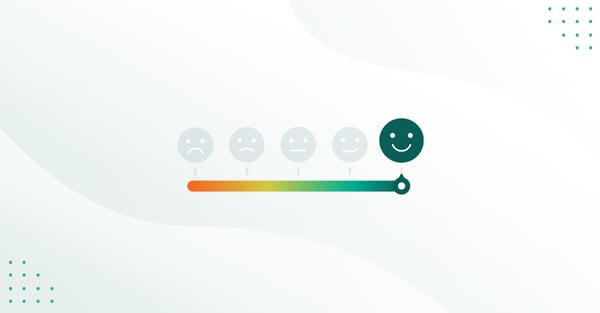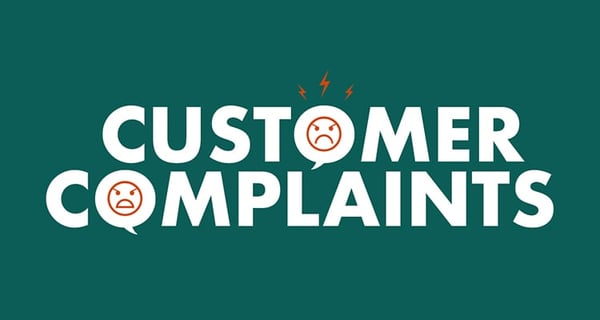Customer-centricity isn’t about being nice - it’s about being smart.
Businesses that prioritize the customer at every stage - from first touch to long-term support - unlock deeper loyalty, stronger retention, and more predictable growth. It’s not just good service, but a scalable strategy for companies ready to lead.
Why does it matter?
Because sustainable growth comes from retention, not just acquisition.
Customer-centric organizations enjoy higher profitability, faster time-to-value, and lower customer churn. They aren’t just reactive - they anticipate customer needs and respond with tailored solutions.
For mid-size B2B companies with mature processes and a need to scale without adding complexity, a customer-centric strategy - enabled by the right CRM - can be transformative.
Why Customer-Centricity Wins
Customer-centricity means designing your business around what your customers truly need - and delivering on those expectations consistently at every stage of their journey.
Companies like Amazon and Zappos have built customer-obsessed cultures that drive loyalty and retention. But even outside of e-commerce giants, customer-centricity is paying off in measurable ways:
- 88% of businesses now see customer experience (CX) as their primary competitive advantage (Deloitte).
- Customer-centric companies are 60% more profitable than those that aren’t (Deloitte & Touche).
- Organizations with customer-focused CEOs are 64% more likely to outperform competitors.
- Improving customer retention by just 2% can drive profitability equivalent to a 10% cost reduction.
- Accenture found businesses treating service as a value center grew revenue 3.5x faster.
The market is clear: customers reward businesses that make them feel heard, valued, and supported.

But here’s the truth - becoming customer-centric is no longer optional. It’s an essential strategy for companies that want to grow sustainably and outperform in a competitive landscape.
Ready to build a customer strategy that actually scales? Talk to a CRM expert at SuperOffice.
What Is Customer-Centricity?
Customer-centricity is a business strategy that puts the customer at the heart of everything - from product development to post-sale support.
It means structuring your organization, processes, and tools to continuously deliver value at every step of the customer journey.
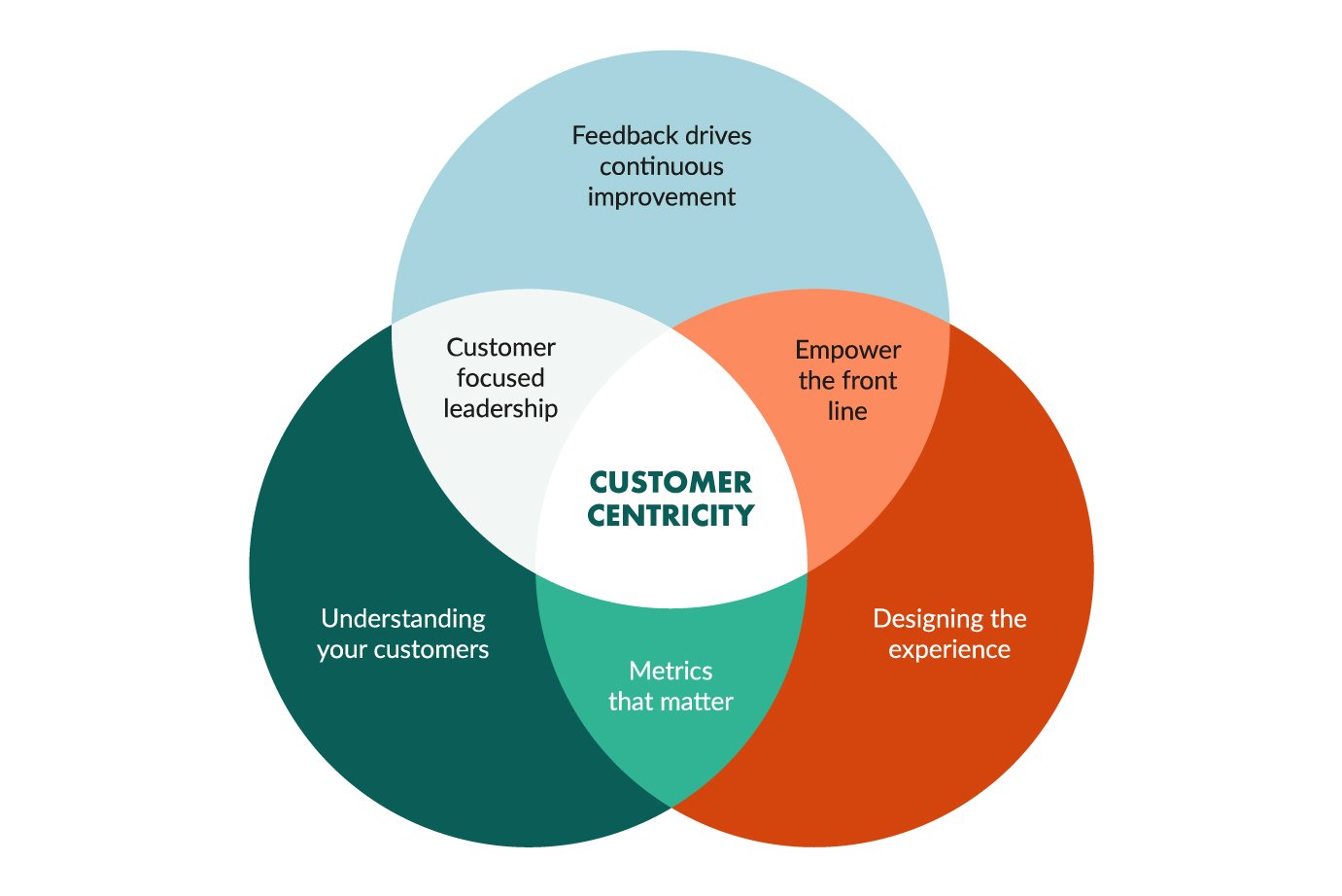
At the core of customer-centricity is insight.
When you integrate your business operations with a powerful CRM like SuperOffice, you gain a full 360° view of each customer’s history, behavior, preferences, and interactions.
This allows your teams to:
- Understand buying patterns and tailor outreach accordingly.
- Segment customers by lifetime value to focus on your most profitable accounts.
- Anticipate needs and proactively offer relevant services or solutions.
With this foundation in place, you don’t just respond to your customers - you grow with them.
That’s the essence of a customer-centric business:
Building long-term, mutually valuable relationships.
Barriers to Becoming Customer-Centric
Transforming into a customer-centric organization is not just a mindset shift - it’s an operational one. And for many businesses, especially those that are product- or sales-led, it’s a difficult transition.
Common Roadblocks:
- Cultural resistance: Long-standing habits and siloed thinking can make it hard for teams to embrace a customer-first philosophy.
- Fragmented data: Without a centralized CRM, customer data is often scattered across systems, making it impossible to create a unified experience.
- Misaligned goals: Teams may be focused on short-term metrics (like quarterly sales) rather than long-term customer value.
- Inconsistent service: Without standardized processes, customers often have inconsistent experiences depending on the team or touchpoint
This disconnect has a real cost.
According to Accenture, companies that treat customer service as a strategic value driver grow revenue 3.5 times faster than those that do not.
Meanwhile, over 50% of customers will leave a brand after just one poor experience - and $35.3 billion in revenue is lost annually due to avoidable customer churn (Call Miner).
The bottom line?
Becoming customer-centric requires internal alignment, the right tools, and a commitment to long-term value - not just short-term wins.
5 Pillars of a Customer-Centric Business
Transforming into a customer-centric company demands systemic alignment across people, processes, and platforms. These five foundational pillars are designed to help B2B companies like yours embed customer-centricity into daily operations and long-term strategy.
1. Staff for Success
Your people are the front lines of the customer experience. Hiring with customer-centricity in mind ensures that every interaction builds trust and loyalty.
- What to do: Recruit individuals who are naturally empathetic, tech-savvy, and comfortable working across departments.
- Why it matters: A support agent who listens deeply and resolves issues quickly adds more long-term value than a rep who just follows a script.
- How to reinforce it: Build customer empathy into onboarding and training, reward behaviours that drive customer satisfaction, and use role-specific KPIs tied to customer outcomes.
For example, instead of evaluating a support team based solely on resolution time, track Net Promoter Score (NPS) or customer satisfaction after interactions.
2. Cultivate Relationships, Not Transactions
In mid-sized B2B companies, recurring revenue and long sales cycles mean relationships matter more than any single sale.
- What to do: Shift your mindset from “closing the deal” to “earning trust.” Engage customers proactively through lifecycle marketing, success check-ins, and value-add insights.
- Why it matters: Relationship-led businesses have higher customer lifetime value (CLV) and lower churn, because they become trusted partners - not vendors.
- How to reinforce it: Set relationship-building goals (like customer health scores or expansion metrics), and use your CRM to track engagement history, not just pipeline.
For example, if a customer hasn’t logged in for 30 days, trigger an automated success email or schedule a check-in call to re-engage.
3. Unify Your Data
Customer insight loses value when it’s stuck in silos. Unifying data through a centralized CRM ensures everyone sees the same 360° view of the customer.
- What to do: Connect your CRM with tools across departments (sales, service, marketing) to build complete customer profiles.
- Why it matters: When data is unified, your team can act faster, personalize outreach, and eliminate redundant communication.
- How to reinforce it: Standardize data entry across teams, invest in CRM training, and create reports that highlight how integrated insights improve outcomes.
For example, a sales rep can tailor their pitch knowing what support tickets a customer has recently submitted - turning frustration into an opportunity.
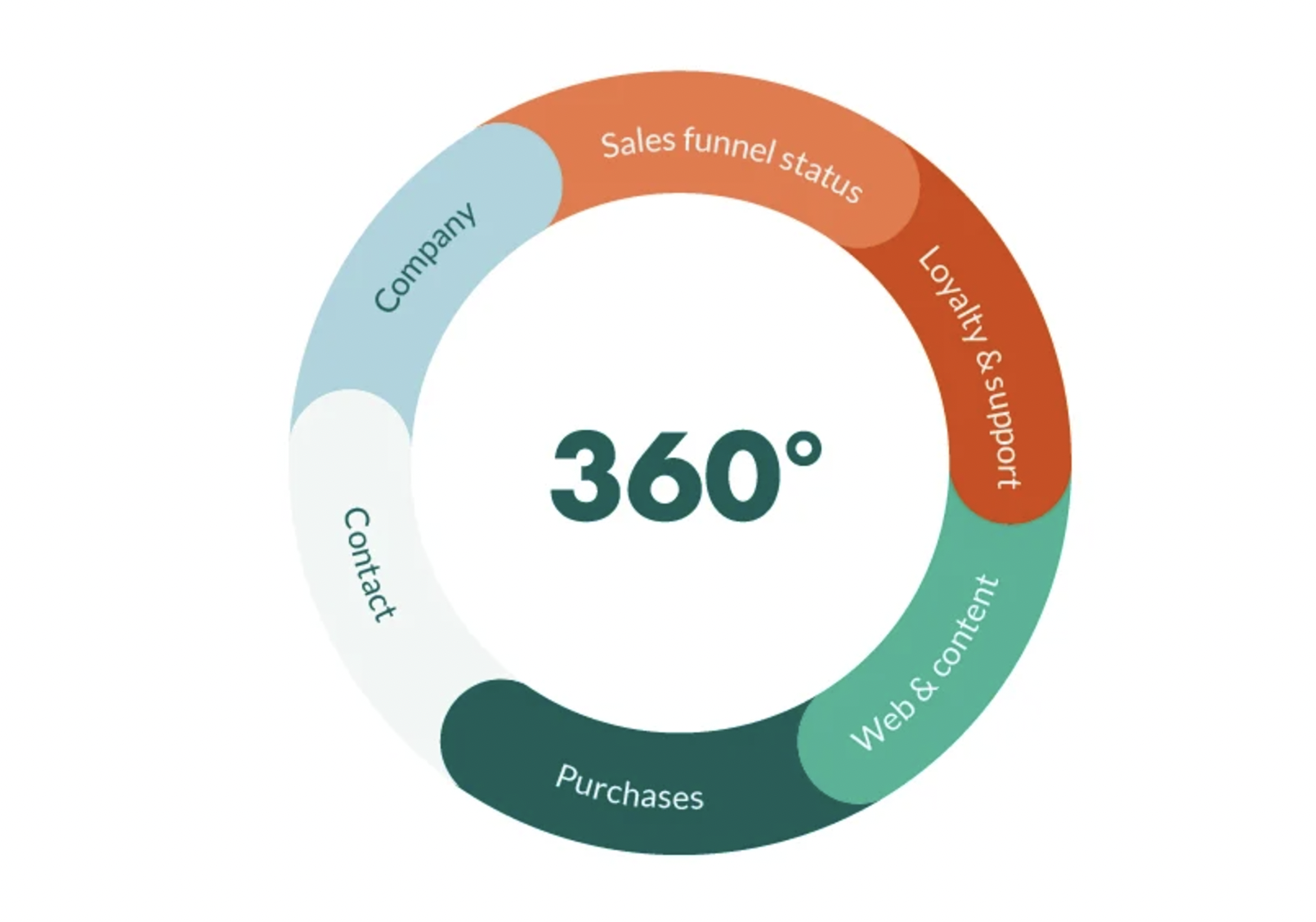
4. Link Culture to Outcomes
To create lasting change, employees must see the tangible impact of a customer-centric culture on real-world results.
- What to do: Highlight wins driven by customer-first thinking - like a simplified onboarding flow reducing support volume by 20%.
- Why it matters: Cultural change sticks when it’s reinforced by visible success and connected to business KPIs.
- How to reinforce it: Celebrate frontline victories, run internal case studies, and use dashboards that show how individual actions move CX metrics.
For example, publicly recognize a team whose customer-focused improvement increased retention or boosted NPS.
5. Blueprint the Experience
Every customer touchpoint - from first website visit to renewal - should be intentional and mapped. Designing a unified customer experience prevents drop-offs, confusion, or inconsistent service.
- What to do: Build a customer journey map, identify friction points, and align your internal processes to support it.
- Why it matters: A documented, intentional CX strategy allows for better resource allocation, clearer ownership, and more consistent delivery.
- How to reinforce it: Turn your journey map into a living framework that evolves with your customers. Review it quarterly and align product, marketing, and support strategies accordingly.
For example, use the map to identify when customers drop off during onboarding, then create automated guides or training touchpoints to improve activation.
At SuperOffice, we call this journey the Relationship Loop - a continuous cycle that connects every phase of the customer experience, from discovery and purchase to onboarding, growth, and retention.
By mapping your customer experience against this framework, you can ensure every touchpoint reinforces trust, drives loyalty, and supports long-term growth.
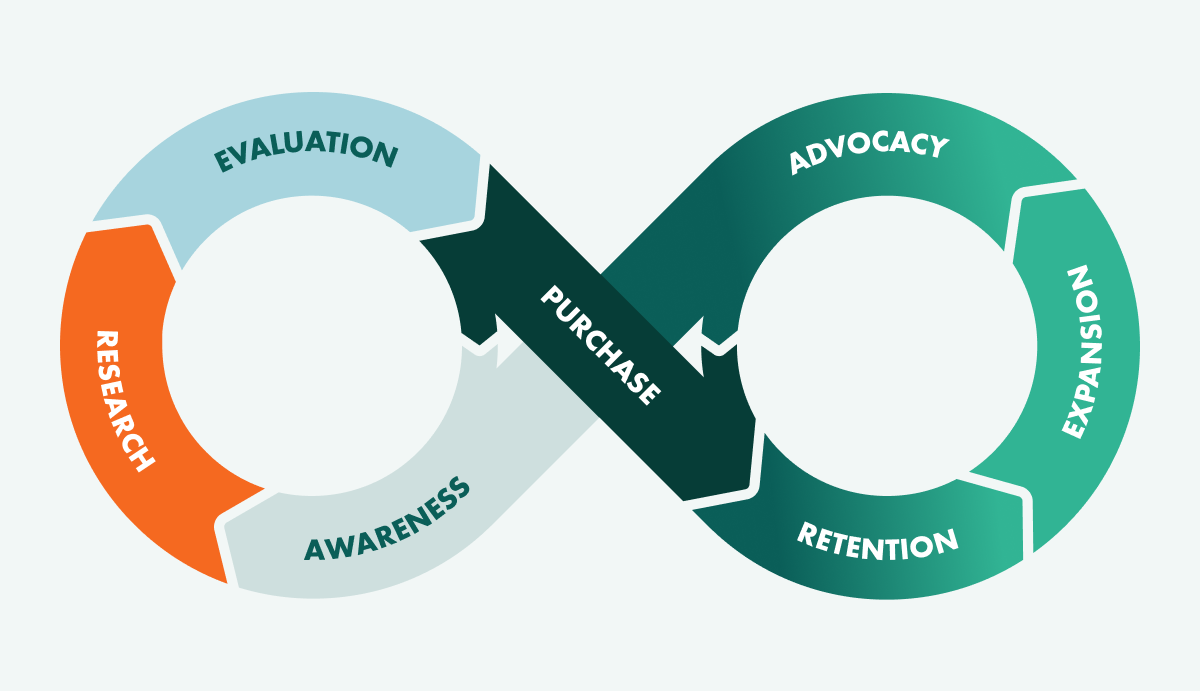
How to Measure the Success of a Customer-Centric Strategy
Customer-centricity isn’t a soft skill - it’s a strategic investment.
And like any investment, it needs to be measured. By tracking the right metrics, you can identify what’s working, where friction exists, and how to continuously improve your customer experience over time.
These three metrics offer a strong foundation for understanding and optimizing your customer-centric strategy.
1. Customer Churn Rate
Why it matters: Churn is a red flag - it tells you when something isn’t working. Whether it’s unmet expectations, a poor onboarding experience, or limited value realization, churn exposes weak points in your customer journey.
The business case:
- It costs 5 to 7 times more to acquire a new customer than to retain an existing one.
- Just a 5% increase in retention can increase profits by up to 95% (Bain & Company).
- Companies with strong customer retention grow faster and spend less on acquisition.
How to measure it:
(Number of customers lost during a time period) ÷ (Average total customers during that period)
What to look for:
- Voluntary churn (customers choosing to leave) often signals dissatisfaction or poor fit.
- Involuntary churn (billing issues, lapses) can often be resolved with better systems and communication.
Tactical tip: Combine churn analysis with qualitative feedback (exit surveys, support transcripts) to uncover root causes and turn insights into action.
2. Net Promoter Score (NPS)
Why it matters: NPS offers a direct view into how your customers feel - and how likely they are to advocate for your brand. It’s a powerful predictor of customer loyalty, referral potential, and brand reputation.
How it works:
You ask: “How likely are you to recommend our product/service to a friend or colleague?”
Customers respond on a scale from 0 to 10 and are grouped as:
- Promoters (9–10): Loyal champions who refer others and renew often
- Passives (7–8): Neutral customers, vulnerable to switching
- Detractors (0–6): Dissatisfied customers who may churn or leave negative reviews
How to calculate NPS:
% Promoters − % Detractors = NPS score (−100 to +100)
What to track:
- Run NPS surveys at multiple touchpoints - after onboarding, after support calls, quarterly check-ins.
- Segment results by customer type, region, or product line to uncover trends.
Tactical tip: Use follow-up questions to understand why a score was given. This helps you distinguish between product issues, service gaps, or misaligned expectations.
3. Customer Lifetime Value (CLV)
Why it matters: CLV reflects how valuable each customer is over the course of your relationship. It helps you allocate resources strategically - whether that’s in acquisition, retention, or expansion.
How to calculate CLV:
CLV = (Average annual revenue per customer × Average customer lifespan) − Cost to acquire
Example:
If a customer spends $2,000/year and stays for 5 years, and it cost $1,000 to acquire them:
CLV = ($2,000 × 5) − $1,000 = $9,000
What to look for:
- CLV by segment: Identify your highest-value customer profiles and double down on them.
- CLV vs. CAC: Ensure you’re not spending more to acquire a customer than they’re worth.
- Rising or falling CLV: May signal changes in product usage, pricing strategy, or market alignment.
Tactical tip: Monitor CLV over time to assess how customer experience improvements (e.g., onboarding, service response time) increase the value of a customer over the long haul.
Want to see what customer-centricity looks like in action? Book your personalized demo today.
Conclusion
Becoming a truly customer-centric organization isn’t an overnight transformation - it’s a strategic, long-term commitment. But the results speak for themselves: higher retention, stronger brand loyalty, increased customer lifetime value, and sustainable business growth.
While many businesses claim to be customer-centric, few back it up with aligned systems, integrated data, and a culture that puts the customer at the core of every decision. The difference lies in execution.
And here’s the good news: even small, intentional changes - like improving onboarding, centralizing customer data, or training your team to listen better - can generate measurable impact.
The key is to start by seeing your company from the customer’s perspective and optimizing around their experience, not just your internal goals.
For mid-sized B2B organizations, especially those with complex service needs and structured sales processes, customer-centricity isn't just a philosophy - it's a competitive edge. And it’s one that becomes far more achievable with the right CRM foundation.
Take the next step

At SuperOffice, we help established, mid-sized companies unify Sales, Service, and Marketing into a single CRM platform - built for teams that want to scale, without sacrificing customer experience.
Want to see how customer-centricity looks in action?



